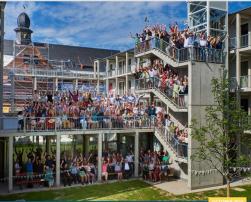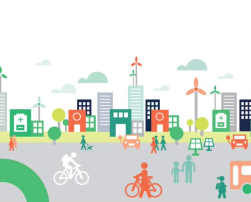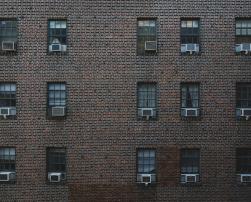
Energy efficiency in hot climates: switchable insulation for sustainable building envelopes
New study shows how Switchable Insulation Systems (SISs), using eco-friendly, low-cost materials, offer adaptable and energy-efficient insulation for hot climates, though simpler designs may be more affordable and effective than advanced technologies.

Healthy buildings: toward a new awareness
The paper proposes a new framework for healthy buildings, addressing gaps in knowledge transfer and offering a holistic, balanced approach to promote well-being and sustainability in the building sector.

Energy trends in Polish hospitals
This study analyses energy consumption trends in Polish hospitals from 2010 to 2019, revealing that larger hospitals are more energy efficient and identifying key factors influencing energy use, aiming to guide policymakers and administrators in enhancing sustainability in healthcare facilities.

Prioritising existing buildings for people and climate
This paper identifies sufficiency measures that reduce the need for unnecessary new construction by maximising the use of existing buildings.

Long-term benefits of green roofs and facades: an in-depth analysis
The study explores how green roofs and facades enhance energy efficiency by improving insulation, regulating temperatures, and reducing heat island effects, thereby promoting sustainable urban development. The paper also addresses current research gaps in the subject focusing on long-term benefits of these systems.

Energy Poverty Advisory Hub - Handbook 3
The third handbook of the 'Energy Poverty Advisory Hub (EPAH) Handbooks' focuses on implementing energy poverty mitigation actions, providing a structured six-step approach for local governments to transform planning into actionable strategies, while emphasising collaboration and adaptation to specific regional needs.

The interplay between aesthetics and energy performance in BIPV modules
A new study explores the balance between aesthetics and energy efficiency in coloured BIPV modules, finding that darker colours yield higher performance but face increased temperatures, reducing energy output in real-world conditions.

Speeding up the implementation of Zero-Emission Buildings and Neighbourhoods through targeted financial policies
This paper puts forward 10 key policy recommendations for national and regional policy makers for overcoming financial barriers for building renovation and transforming existing buildings into zero emission or positive energy neighbourhoods by 2050.

Cooler Finance: Mobilising Investment for the Developing World’s Sustainable Cooling Needs
This report by IFC and UNEP predicts the sustainable cooling market in developing economies will double to $600 billion annually by 2050, highlighting the need for financing and collaboration.

Natural ventilation, trombe wall systems and their potential for sustainability
The article highlights the significance of trombe wall systems as effective passive ventilation solutions in modular homes, emphasising their role in energy efficiency and sustainability while identifying optimal parameters for performance and the need for further research on design factors.